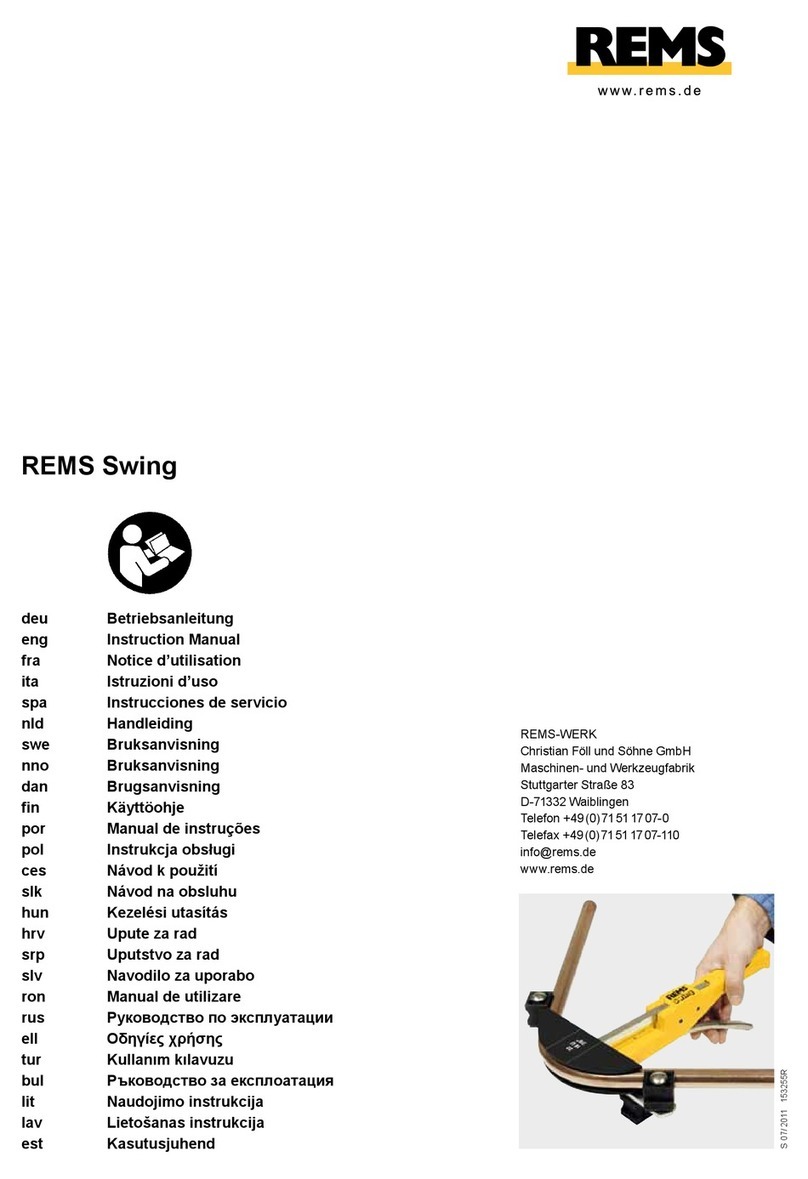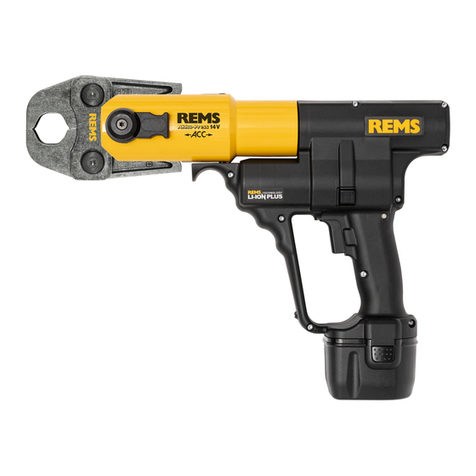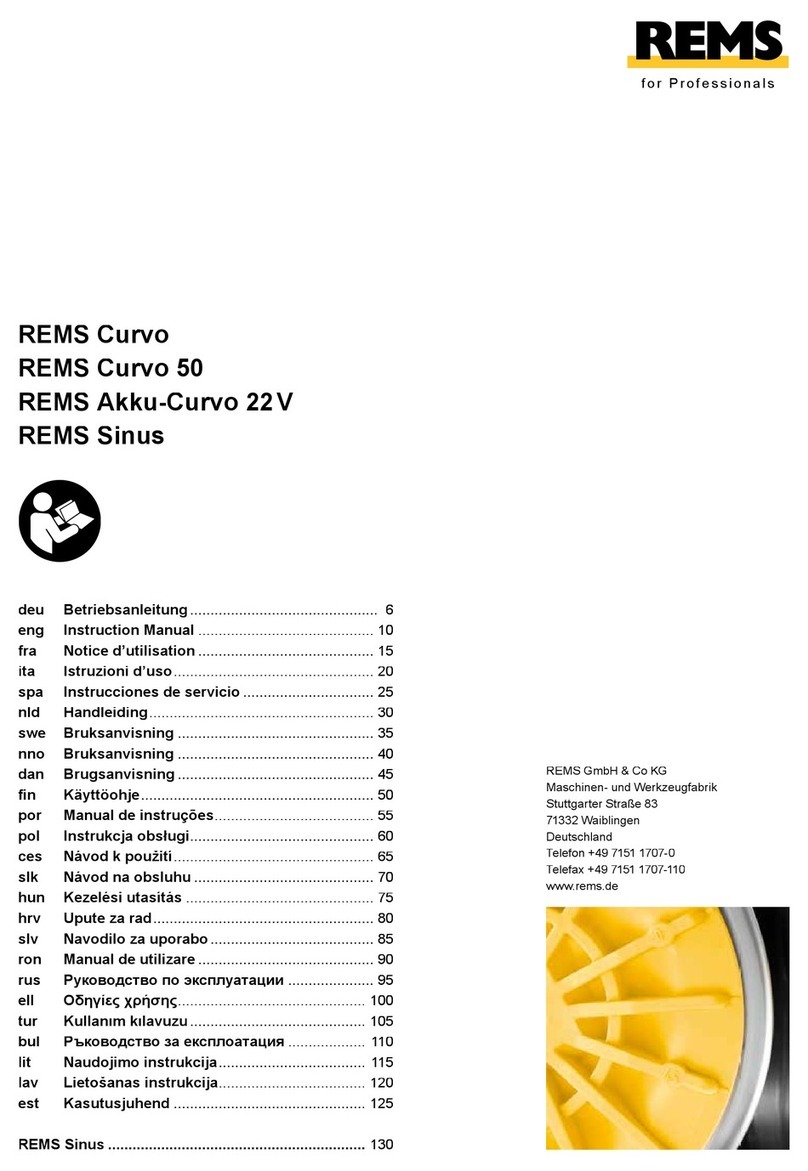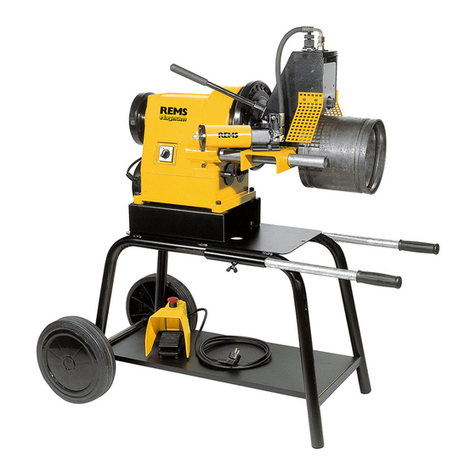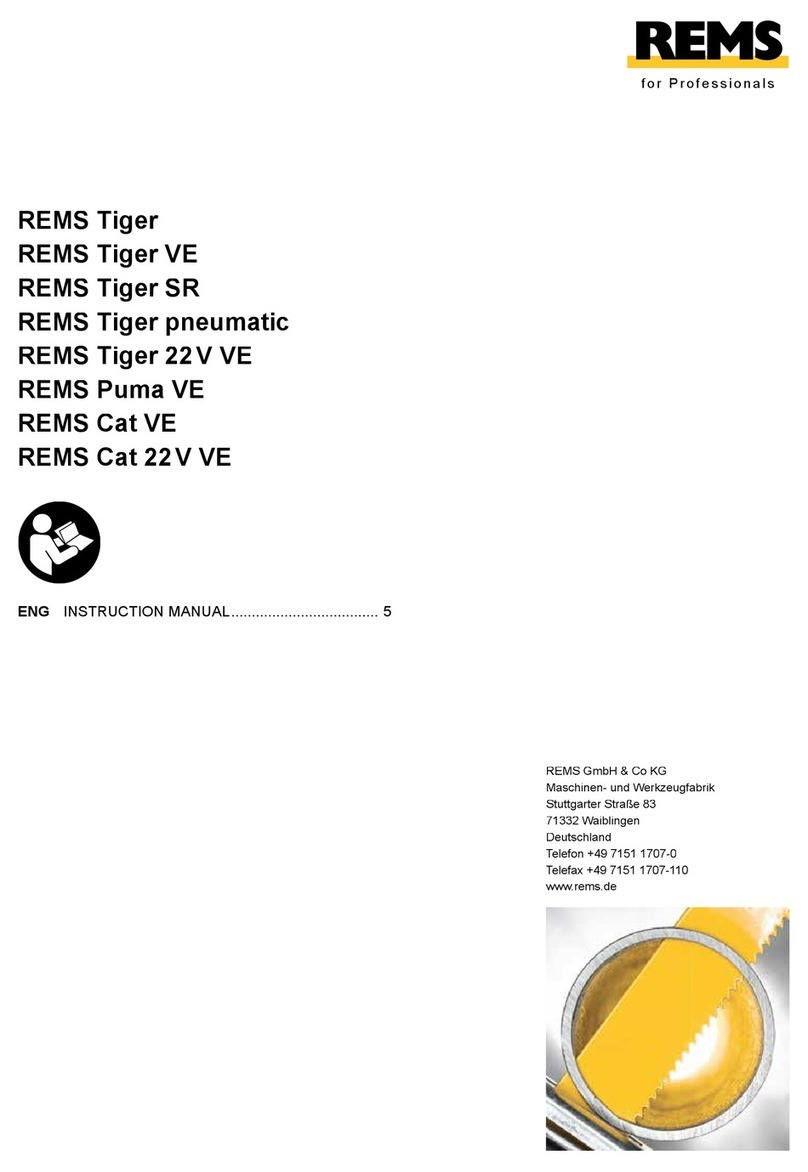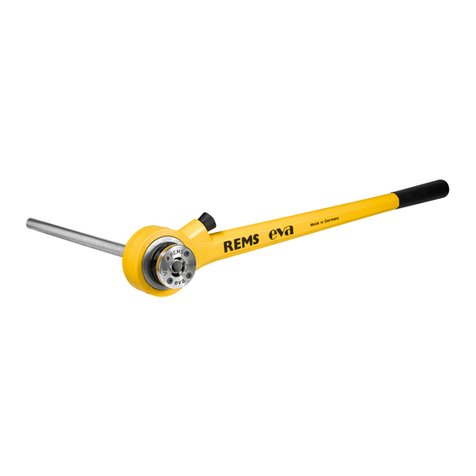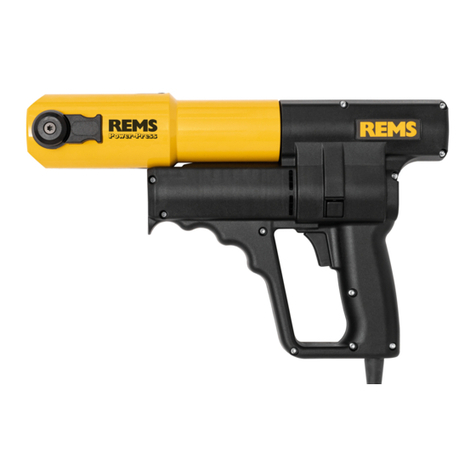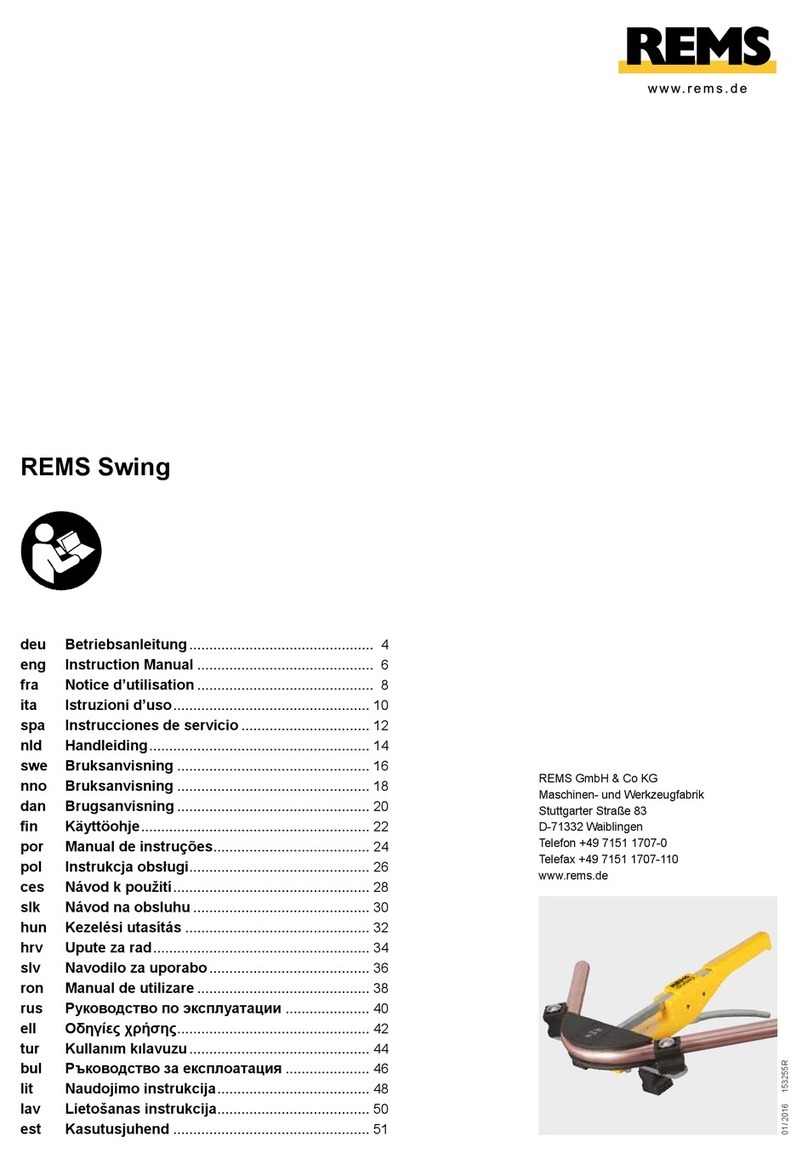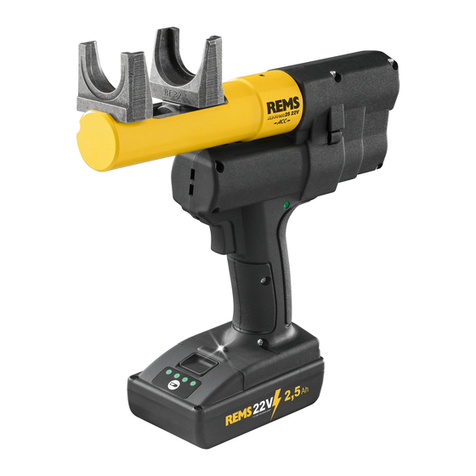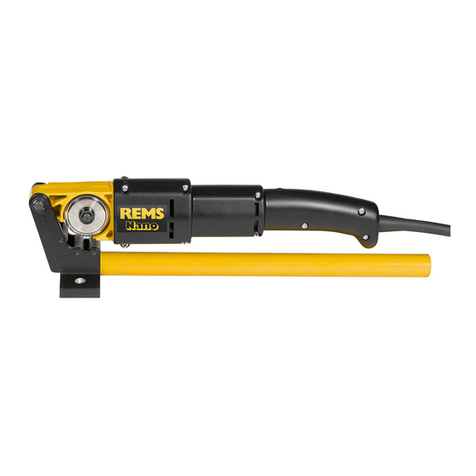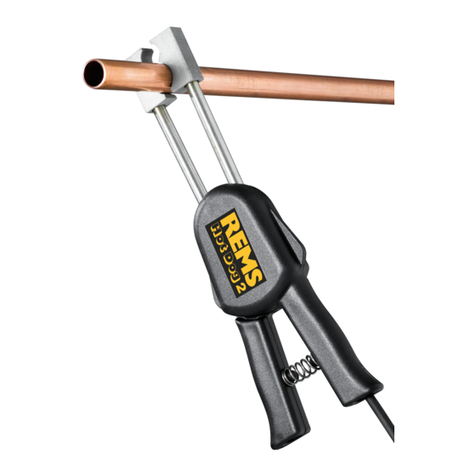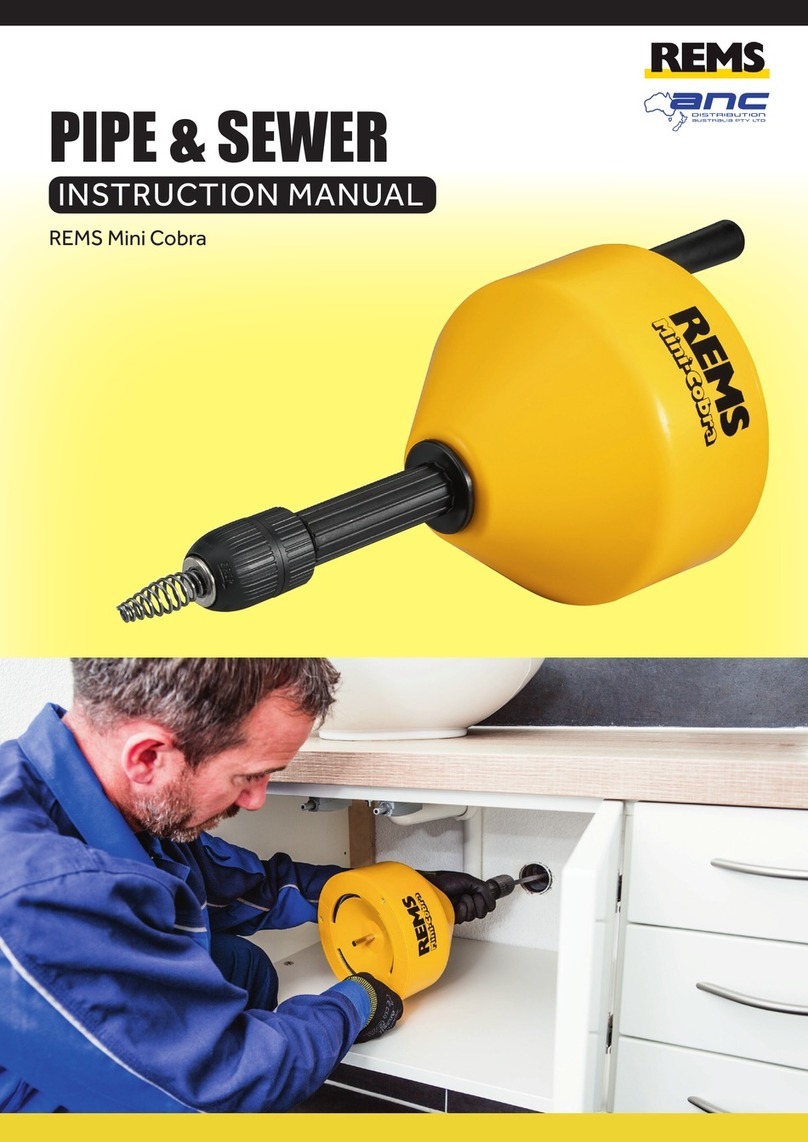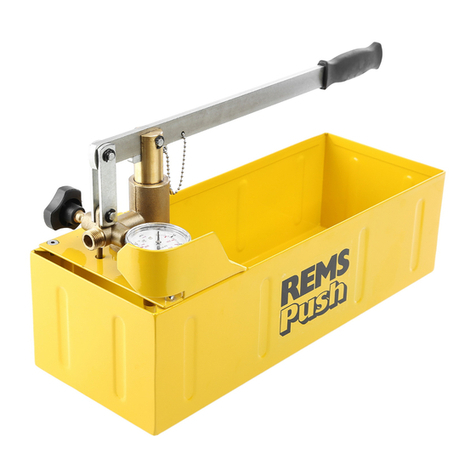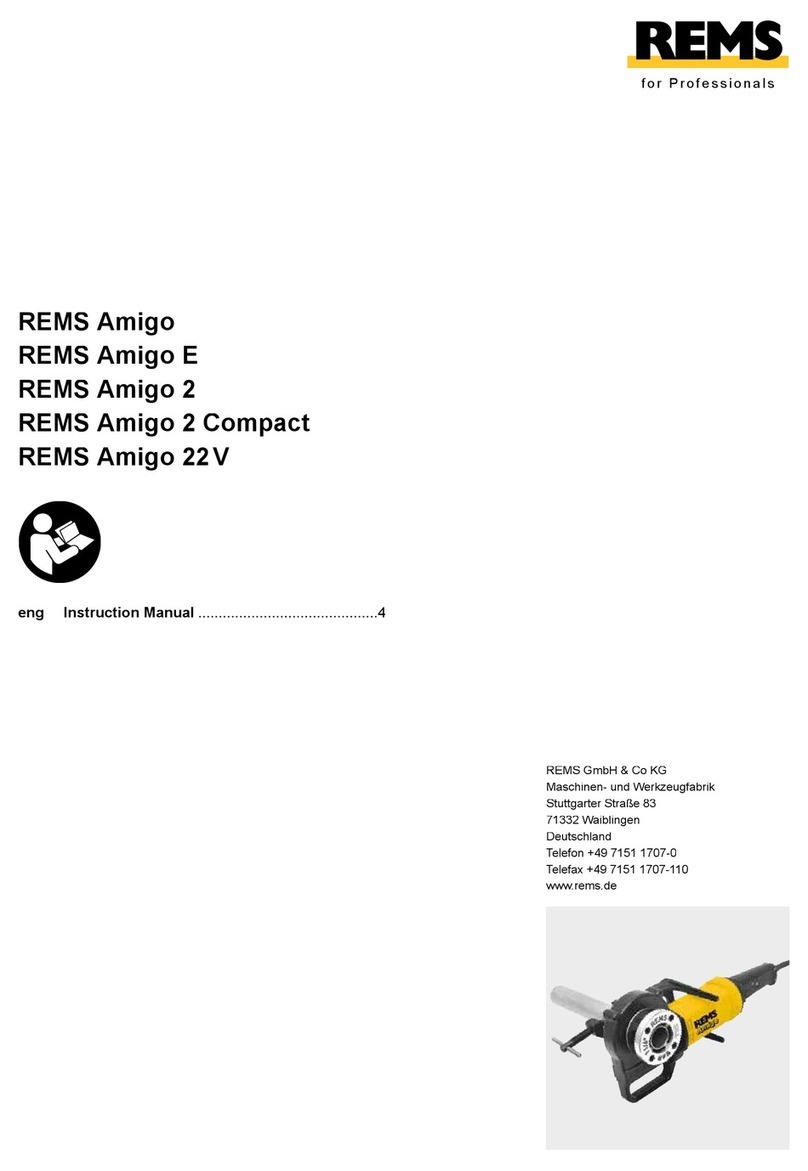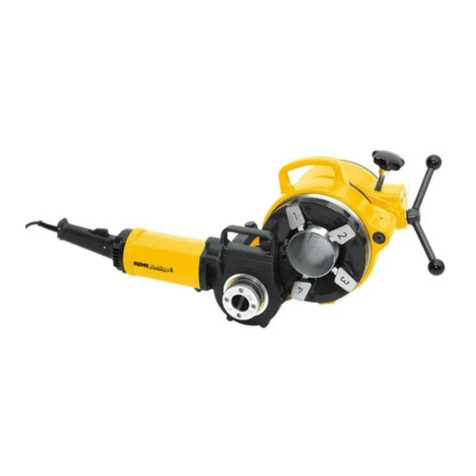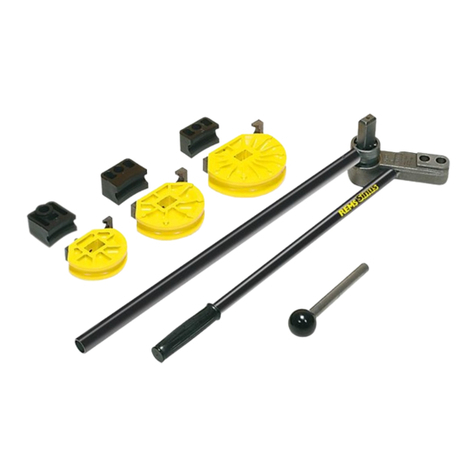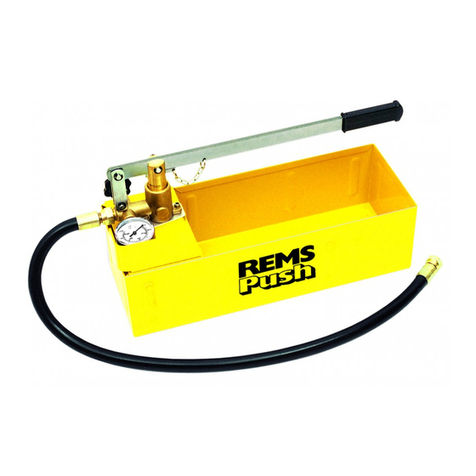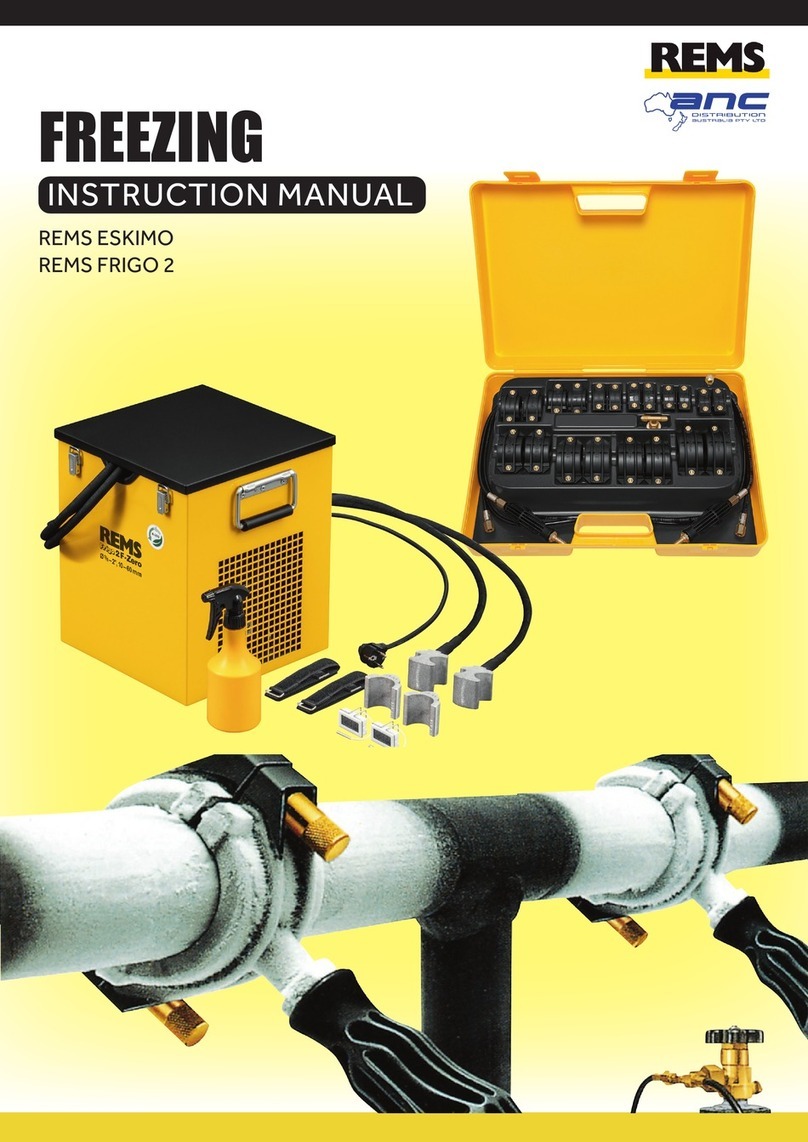
Translation of the Original Instruction Manual
The respective latest REMS sales literature applies for the use of REMS pressing
heads and REMS expanding heads for the different pipe connection systems, see
also www.rems.de → Downloads → Product Catalogues, Brochures.
manufacturer alters components of pipe connection systems or markets new ones,
their current application status must be enquired about at REMS (Fax +49 7151 17
1
2
3
4
5
6
7
8
9
10
11
12
13
Graduated charging level indicator
4
Guidelines for use of REMS cordless tools, batteries, rapid chargers,
5
General power tool safety warnings
WARNING
Read all safety warnings, instructions, illustrations and specifi cations provided
Failure to follow all instructions listed below may result in
electric shock, fi re and/or serious injury.
Save all warnings and instructions for future reference.
The term “power tool” in the warnings refers to your mains-operated (corded) power
tool or battery-operated (cordless) power tool.
a) Keep work area clean and well lit.
Cluttered or dark areas invite accidents.
b) Do not operate power tools in explosive atmospheres, such as in the pres-
ence of fl ammable liquids, gases or dust.
Power tools create sparks which
may ignite the dust or fumes.
c) Keep children and bystanders away while operating a power tool.
tions can cause you to lose control.
a) Power tool plugs must match the outlet. Never modify the plug in any way.
Do not use any adapter plugs with earthed (grounded) power tools.
fi ed plugs and matching outlets will reduce risk of electric shock.
b) Avoid body contact with earthed or grounded surfaces, such as pipes,
radiators, ranges and refrigerators.
There is an increased risk of electric shock
if your body is earthed or grounded.
c) Do not expose power tools to rain or wet conditions.
tool will increase the risk of electric shock.
d) Do not abuse the cord. Never use the cord for carrying, pulling or unplug-
ging the power tool. Keep cord away from heat, oil, sharp edges or moving
Damaged or entangled cords increase the risk of electric shock.
e) When operating a power tool outdoors, use an extension cord suitable for
Use of a cord suitable for outdoor use reduces the risk of electric
f) If operating a power tool in a damp location is unavoidable, use a residual
current device (RCD) protected supply.
Use of an RCD reduces the risk of
a) Stay alert, watch what you are doing and use common sense when oper-
ating a power tool. Do not use a power tool while you are tired or under
the infl uence of drugs, alcohol or medication.
A moment of inattention while
operating power tools may result in serious personal injury.
b) Use personal protective equipment. Always wear eye protection.
tive equipment such as a dust mask, non-skid safety shoes, hard hat or hearing
protection used for appropriate conditions will reduce personal injuries.
c) Prevent unintentional starting. Ensure the switch is in the off-position before
connecting to power source and/or battery pack, picking up or carrying the
Carrying power tools with your fi nger on the switch or energising power
tools that have the switch on invites accidents.
d) Remove any adjusting key or wrench before turning the power tool on.
wrench or a key left attached to a rotating part of the power tool may result in
e) Do not overreach. Keep proper footing and balance at all times.
better control of the power tool in unexpected situations.
f) Dress properly. Do not wear loose clothing or jewellery. Keep your hair and
clothing away from moving parts.
Loose clothes, jewellery or long hair can be
g) If devices are provided for the connection of dust extraction and collec-
tion facilities, ensure these are connected and properly used.
collection can reduce dust-related hazards.
h) Do not let familiarity gained from frequent use of tools allow you to become
complacent and ignore tool safety principles.
A careless action can cause
severe injury within a fraction of a second.
4) Power tool use and care
a) Do not force the power tool. Use the correct power tool for your application.
The correct power tool will do the job better and safer at the rate for which it was
b) Do not use the power tool if the switch does not turn it on and off.
tool that cannot be controlled with the switch is dangerous and must be repaired.
c) Disconnect the plug from the power source and/or remove the battery pack,
if detachable, from the power tool before making any adjustments, changing
accessories, or storing power tools.
Such preventive safety measures reduce
the risk of starting the power tool accidentally.
d) Store idle power tools out of the reach of children and do not allow persons
unfamiliar with the power tool or these instructions to operate the power
Power tools are dangerous in the hands of untrained users.
e) Maintain power tools and accessories. Check for misalignment or binding
of moving parts, breakage of parts and any other condition that may affect
the power tool’s operation. If damaged, have the power tool repaired before
Many accidents are caused by poorly maintained power tools.
f) Keep cutting tools sharp and clean.
Properly maintained cutting tools with
sharp cutting edges are less likely to bind and are easier to control.
g) Use the power tool, accessories and tool bits etc. in accordance with these
instructions, taking into account the working conditions and the work to be
Use of the power tool for operations different from those intended
could result in a hazardous situation.
h) Keep handles and grasping surfaces dry, clean and free from oil and grease.
Slippery handles and grasping surfaces do not allow for safe handling and control
of the tool in unexpected situations.
5) Battery tool use and care
a) Recharge only with the charger specifi ed by the manufacturer.
that is suitable for one type of battery pack may create a risk of fi re when used
with another battery pack.
b) Use power tools only with specifi cally designated battery packs.
other battery packs may create a risk of injury and fi re.
c) When battery pack is not in use, keep it away from other metal objects, like
paper clips, coins, keys, nails, screws or other small metal objects, that
can make a connection from one terminal to another.
terminals together may cause burns or a fi re.
d) Under abusive conditions, liquid may be ejected from the battery; avoid
contact. If contact accidentally occurs, fl ush with water. If liquid contacts
eyes, additionally seek medical help.
Liquid ejected from the battery may cause
e) Do not use a battery pack or tool that is damaged or modifi ed.
modifi ed batteries may exhibit unpredictable behaviour resulting in fi re, explosion
f) Do not expose a battery pack or tool to fi re or excessive temperature.
Exposure to fi re or temperature above 130 °C may cause explosion.
g) Follow all charging instructions and do not charge the battery pack or
tool outside the temperature range specifi ed in the instructions.
improperly or at temperatures outside the specifi ed range may damage the battery
and increase the risk of fi re.
a) Have your power tool serviced by a qualifi ed repair person using only
identical replacement parts.
This will ensure that the safety of the power tool
b) Never service damaged battery packs.
Service of battery packs should only
be performed by the manufacturer or authorized service providers.
Safety notes for cordless axial presses
and pipe expanders
WARNING
Read all safety warnings, instructions, illustrations and specifi cations provided
Failure to follow all instructions listed below may result in
electric shock, fi re and/or serious injury.
Save all warnings and instructions for future reference.
Do not use the power tool if it is damaged.
There is a danger of accident.
Hold the power tool fi rmly by the housing grip (
1
3
make sure you are standing fi rmly when working.
a very high pressing force. It is safer to hold the tool with both hands. Therefore
very careful. Keep children and bystanders away while operating the power tool.
Do not reach into moving parts in the pressing area/expanding area.
is a risk of injury by crushing fi ngers or han
ds.
●
On
ly operate the axial press with pressing heads fully inserted.
do so could lead to fracture and fl ying parts can cause serious injuri
es.
●
Al
ways screw expanding heads as far as they will go onto the expander.
Failure to do so could lead to fracture and fl ying parts can cause serious injuries.
●
Use only undamaged pressing heads, expanding heads. Damaged pressing
heads, expanding heads can jam or fracture and/or the press fi tting will be faulty.
Do not attempt to repair pressing heads, expanding heads. Failure to do so could
lead to fracture and fl ying parts can cause serious injuries.
●
Pull out the mains plug or remove the battery before assembly/disassembly
of pressing heads, expanding heads. There is a risk of injury.
●
Comply with the maintenance regulations for the power tool and follow the
maintenance instructions for pressing heads, expanding heads. Following
the maintenance instructions will have a positive effect on the life expectancy of
the power tool, pressing heads and expanding heads.
